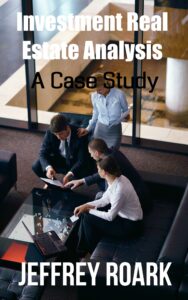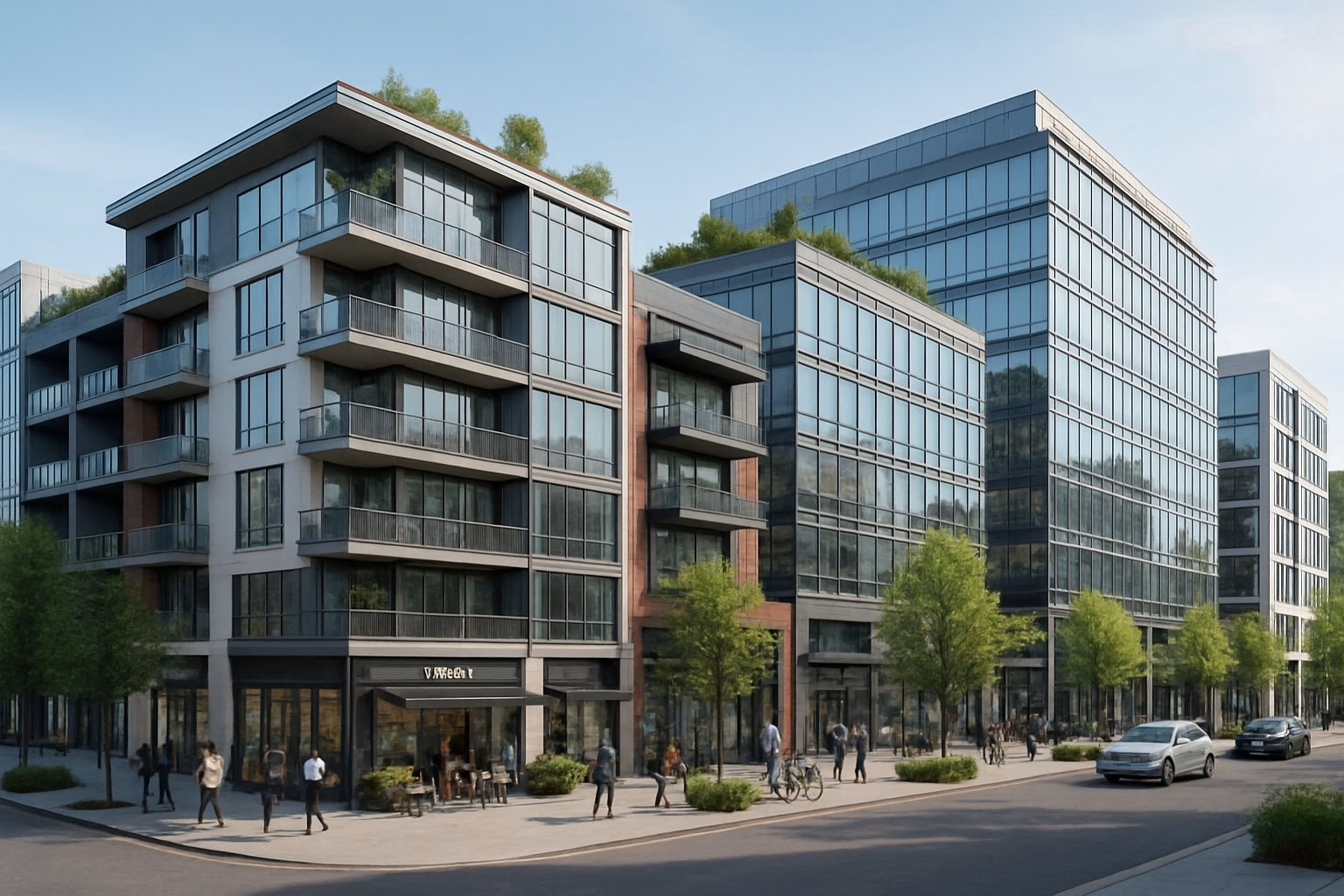Developers and investors increasingly recognize the value of combining multiple property types within single developments. Mixed-use real estate integrates residential, commercial, retail, and office spaces into unified projects that serve diverse community needs while creating more profitable investments. These properties have become mainstream development strategies across cities of all sizes.
Rising land costs and evolving zoning regulations drive mixed-use properties in dense urban areas. These developments reshape neighborhoods by placing apartments above street-level shops, positioning offices near restaurants, and creating walkable districts where people can live, work, and shop without long commutes. This integration offers advantages for property owners, tenants, and surrounding communities.
To evaluate mixed-use developments, examine their structure, financial performance, and operational complexities. Investors considering these projects should understand the fundamentals to assess opportunities and challenges in this sector.
Key Takeaways
- Mixed-use developments combine residential, commercial, and retail spaces within single properties to maximize land efficiency and create integrated communities
- These properties offer diversified income streams and reduced vacancy risk compared to traditional single-use real estate investments
- Successfully managing mixed-use developments requires careful tenant coordination, regulatory knowledge, and long-term planning strategies
Core Concepts of Mixed-Use Development
Mixed-use development integrates multiple revenue-generating functions within a single project or area, combining residential, commercial, retail, and office components to create self-sustaining environments. This approach emphasizes spatial efficiency and strategic urban planning to foster walkable communities where residents and tenants can access daily needs without extensive travel.
Defining Mixed-Use Development in Real Estate
Mixed-use properties are developments that combine three or more significant revenue-producing uses within a unified project framework. These properties extend beyond simple multi-story buildings with ground-floor retail and upper-level apartments.
Mixed use real estate development can range from a single building containing multiple functions to large-scale master-planned communities spanning several blocks. The integration must be intentional, with complementary uses that support and enhance each other.
Successful mixed-use developments create synergy between different components. Residential units provide built-in customers for retail spaces, while commercial space and office areas generate daytime activity that supports restaurants and service businesses.
Key Components: Residential, Retail, Commercial, and Office
Residential units form the foundation of most mixed-use properties, providing constant population density that sustains other uses. These units range from apartments and condominiums to townhomes, depending on the project scale and market demand.
Retail spaces typically occupy ground-floor locations with high visibility and foot traffic. Grocery stores, restaurants, cafes, personal services, and specialty shops serve both residents and visitors.
Commercial space encompasses a broader category that includes:
- Office space for professional services, tech companies, and corporate tenants
- Entertainment venues such as theaters, fitness centers, and event spaces
- Community amenities like coworking spaces, conference rooms, and shared lounges
- Healthcare facilities including medical offices and wellness centers
The specific mix depends on target demographics and local market conditions. Office components bring weekday traffic, while retail and entertainment uses activate evenings and weekends.
Forms and Typologies: Vertical vs. Horizontal Mixed-Use
Vertical mixed-use stacks different functions within a single building or connected structures. Typically, retail occupies the ground floor, office space sits on intermediate levels, and residential units occupy upper floors. This configuration maximizes land efficiency in dense urban areas where property costs are high.
Horizontal mixed-use distributes different uses across multiple buildings within a defined area or campus. These developments create neighborhood-scale districts with walkable access between distinct retail, residential, and commercial buildings.
Vertical mixed-use requires careful coordination of building systems, separate entrances, and sound isolation between uses. Horizontal mixed-use provides more flexibility for phased development and allows each component to have appropriate parking, loading, and access requirements.
Role of Urban Planning and Walkability
Urban planning principles drive mixed-use development by establishing zoning regulations, density requirements, and design standards that enable multiple uses to coexist. Planning codes that reduce parking minimums, allow flexible use categories, and encourage pedestrian-oriented design add value to these projects.
Walkability measures the ease with which tenants and residents can reach daily destinations on foot. Walkable communities typically feature sidewalks, crosswalks, traffic-calming measures, and short distances between complementary uses.
Street-level design elements such as wide sidewalks, weather protection, street trees, outdoor seating, and transparent storefronts enhance the pedestrian environment. Ground-floor activation through retail or amenity spaces prevents dead zones and supports walkability.
Investment, Benefits, and Operational Considerations
Mixed-use projects deliver multiple revenue streams but require careful financial planning and active management to balance diverse tenant requirements. Evaluating both the financial advantages and operational complexities supports sound investment decisions.
Advantages for Investors and Property Value Growth
Mixed-use developments provide diversified income streams that protect portfolios from market fluctuations. When commercial tenants face downturns, residential units continue generating stable cash flow. This income diversity often results in stronger ROI compared to single-use properties.
Property value appreciation accelerates in mixed-use projects due to versatility and high tenant demand. Investors benefit from multiple asset classes within one development, reducing vacancy risks across different market cycles. Premium tenants pay higher rates for convenient live-work spaces with integrated amenities.
Key financial advantages include:
- Multiple revenue streams from residential, retail, and office spaces
- Higher resale values driven by strong market demand
- Reduced vacancy rates through diverse tenant pools
- Increased rent premiums for walkable, amenity-rich locations
Real estate investors see faster appreciation in urban areas with strong population growth and limited housing inventory. Properties near public transportation and employment centers command premium valuations. The combination of residential stability and commercial growth potential creates balanced risk profiles attractive to institutional investors.
Sustainability, Affordability, and Community Impact
Mixed-use developments reduce urban sprawl by concentrating housing, work, and retail in walkable neighborhoods. This approach decreases transportation costs for residents and promotes environmental sustainability through reduced vehicle dependence. Compact designs use land more efficiently than traditional suburban patterns.
Affordable housing integration in mixed-use projects creates economic diversity and strengthens community development. Including workforce housing alongside market-rate units generates stable long-term tenancy and can meet municipal requirements. Investors can access tax incentives and financing programs that support mixed-income developments.
Adaptive reuse projects transform obsolete structures into vibrant mixed-use spaces, preserving architectural heritage while meeting modern needs. Converting old factories or warehouses into residential lofts with ground-floor retail can reduce construction costs compared to new builds and often qualifies for historic tax credits and sustainability certifications.
Community centers and shared amenities foster social connections between residents and commercial tenants. Developments that function as neighborhood destinations increase tenant retention and property appeal in the real estate market.
Challenges: Costs, Tenant Mix, and Property Management
Construction costs for mixed-use developments exceed single-use buildings due to complex designs and varied building codes. Account for different structural requirements, separate utility systems, and specialized finishes across residential and commercial spaces. Initial capital requirements can strain financing, so you may need to implement creative funding strategies.
Managing tenant mix requires balancing residential needs with commercial operations. Noise from late-night restaurants often conflicts with residential quiet hours. Use clear lease terms addressing operational hours, deliveries, and shared space usage to prevent disputes.
Property managers must handle diverse tenants with different lease structures and maintenance needs. Commercial tenants seek longer lease terms and tenant improvement allowances, while residential units turn over more frequently. Coordinating maintenance schedules, security protocols, and common area management across property types requires specialized expertise.
Common operational challenges:
- Varying lease terms between residential and commercial spaces
- Conflicting tenant needs regarding noise, parking, and access hours
- Higher insurance costs covering multiple use types
- Complex code compliance across different property classifications
Many real estate investors hire specialized management firms with experience in multi-tenant operations. Property management software streamlines rent collection, maintenance requests, and lease administration across different tenant categories. Robust systems protect the financial benefits of diversified income streams by minimizing operational inefficiencies.
Are You Looking To Connect With Property Owners, Landlords, and Real Estate Investors?
Grow your business by connecting with property professionals with our cost-effective advertising options.

Dive deep into the world of real estate investment with this comprehensive case study that brings theory to life.
Investment Real Estate Analysis: A Case Study offers an unparalleled look at the decision-making process behind successful property investments. Follow along as we dissect a real-world scenario, revealing the critical factors that seasoned investors consider before making a move.
From crunching numbers to assessing market conditions, this book walks you through every step of the analysis process. Learn how to evaluate potential investments like a pro, understanding key metrics such as cap rates, cash-on-cash returns, and internal rate of return.
Whether you’re a novice investor or looking to refine your skills, this case study will equip you with the tools to make informed investment decisions in the competitive real estate market.
Get your copy now from your favorite bookseller:
- Amazon
- Books2Read for Apple, Barnes & Noble, Kobo, Scribed, and 8 more sellers with both eBook and paperback options available
- Payhip as a downloadable PDF
Ready to take your business to the next level?
- Subscribe to our newsletter
- Visit the learning center
- Learn more about our consulting services



